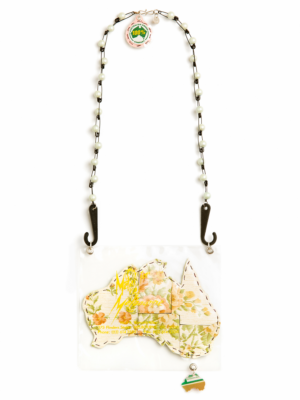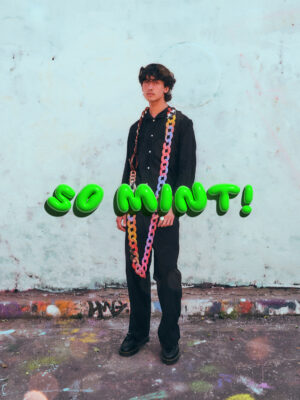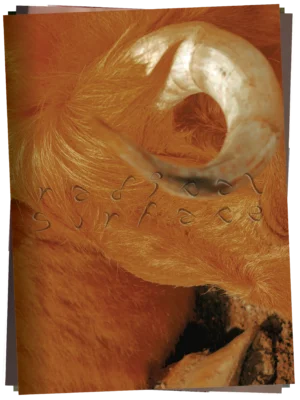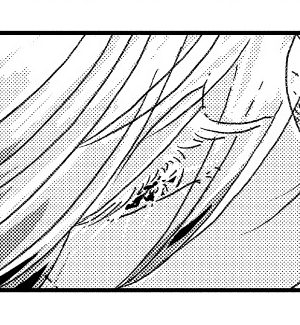
Furthermore, in Shariputra, the world known as the Land of Bliss, there are lotus ponds, all made of seven precious substances, namely, gold, silver, emerald, rock crystal, red pearl, sapphire, and mother of pearl as the seventh. […] The bottom of each pond is covered with golden sand.[…] These stairways are colourful, elegant, and made of four precious substances, namely, gold, silver, emerald, and rock crystal.(1)
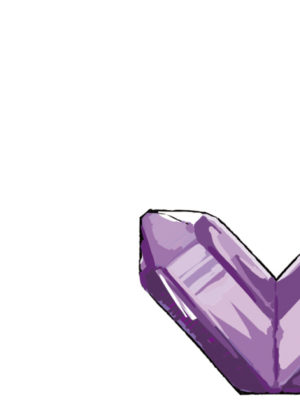
Japanese manga author Haruko Ichikawa was inspired by this description to transform the gems into characters in her series, Houseki no Kuni (The Kingdom of Gems). In the distant future Gem Warriors battle with the Moon People who mount raids from above to kidnap the living gems to use for decorations.
Gem warriors look human but shatter upon impact. Their broken surfaces reflect light with a brilliant lustre. The moment of destruction is shockingly beautiful, yet they never truly die and can regain human form if their shards are put back together.
In the course of the story we learn that the rival Gem Warriors and Moon People share the same origin—they were both once human. Bone became gemstone and the soul became the Moon People. The setup makes The Kingdom of Gems a story of humanity told through gems.
Current Obsession conducted an e-mail interview with Haruko Ichikawa to find out what’s behind the story and what she wants to say with her gem-laden allegory.
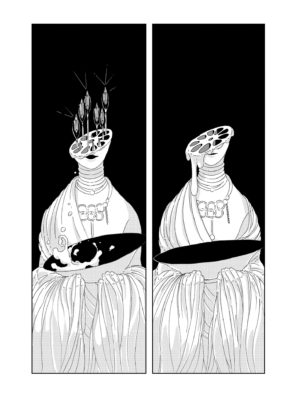
Background and Aesthetic
Many Japanese manga artists did not start as manga artists. Haruko Ichikawa is noexception. She was an editorial designer before she broke into manga.
I enjoyed drawing when I was a little girl and that’s why I chose a high school that hadan art course. Then, my interest moved from art to design and in university I majored in visual image design. After graduation I worked as an editorial designer at a design company. I think the experience taught me how to design panels, how to make panels flow and how to balance black and white—basically, effective layouts that smoothly lead the eye of the reader. I’m also able to design my own books thanks to the techniques that I developed as an editorial designer.
Usually design studios handle book design but Ichikawa does it herself. Her brightly coloured covers glitter with lamé to suggest the world of gems waiting inside, while her minimalist two-dimensional style makes each panel stand as a pleasing piece of graphic design. The brilliance of the Gems stands out among the strong contrast of black andwhite pages. They look most beautiful when they shatter.The human-like appearance of the Gems makes this moment shocking, but also bewitching.
I’m most attracted to the beauty within the horrific. Imagine the thrill of peeking at the secret hidden a veil — an unexpected shock, or a macabre scene you can’t turnaway from. That’s what I hope to recreate on the page.
Her aesthetic is evident in the unique design of the characters. If the Gems are beautiful, then the bizarre Moon People are simply otherworldly. How did Ichikawa create these characters?
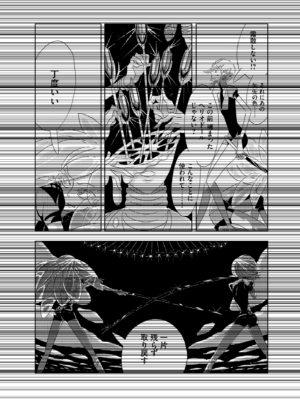

Character Design
There are two main groups of characters. While the colour and brilliance of gems are expressed as a Gem fighter’s hair, Moon People are covered with ornate Buddhist decorations such as multiple layers of delicate heavenly garments and jewellery.
When I design Gem Warriors I try to get a specimen of the stone and base the design on its physical properties such as colour, hardness, strength, crystal shape and scarcity. On the other hand I try to show Moon People as soft and eerie beings with a hint of grace in order to make them look bizarre.
Nearly every real world property is reflected in a Gem warrior’s personality. Phosphophyllite (Phos), the main character with the ‘beautiful colour of shallow water on a western beach’, lacks hardness and breaks as easily as actual phosphophyllite. Twin crystal amethyst is literally transformed into captivating twins, while the red-haired Cinnabar is knowledgeable, though cast as a lone wolf because her body is filled with a toxin. Real life cinnabar is known as the philosopher’s stone and contains mercury.
Alexandrite is usually a green-haired Moon People researcher, but she turns into a violent redhead in front of actual Moon People. Her personality is in line with real alexandrite that changes colour depending on the type of light it reflects.
Phos responds,‘I am well aware, my dear seven.’When speaking with Ichikawa it becomes apparent that her rich knowledge of stones and scientific viewpoint comes from her passion as a collector.
My biggest pleasure is the surprise of discovery. Recently I’m most interested in how good intentions can lead to misfortune. This phenomenon happens quite often in science, which is why I like the field. I have around 300 stones in my collection. I’ve been interested in stones since I was a little girl so I’ve forgotten how I started to collect them. I’m attracted to their simple chemical formula, near infiniteness,uniqueness, as well as the wonderful colour, texture and shape. I think every stone has its own appeal, be it a pebble on the beach or the most beautiful gem.
Her choice of gems in the manga backs up this statement. The Gem warriors include valuable precious stones, such as diamond, as well as semi-precious stones that are usually acknowledged as inferior to gems. In her story, Gems vary in terms of fighting ability but are essentially treated as equals.
Inspiration
In The Kingdom of Gems, gems walk, talk and feel emotions just like us. How did Ichikawa come up with a unique idea of turning a gem into a humanshaped character?
I had the idea that maybe minerals lived on a different time axis as ours — we just didn’t realize it.
And how did a passage from a Buddhist sutra,‘the land of the Perfect Bliss is made of gems,’contribute to the story?
In the sutra gems are an accessible way to describe the beauty and majesty of the Land of Bliss. They are native to the Land of Bliss, not stolen from elsewhere. When I first read the sutra it occurred to me that Buddhism didn’t consider these ornamentalgems as eligible for salvation.
It’s not that the sutra made me feel disappointed in Buddhism or want to liberate gems myself. The sutra provides a simple message for the masses by comparingobjects of unparalleled beauty to gems. It made me realize that there’s a limit to our shared imagination. There’s a line somewhere.
So where does that put inorganic compounds? They can’t speak for themselves. It’s pretty convenient to ignore this and assume them to be subservient. It’s hard to put my feelings into words, but I felt a very human danger — and attraction — in the vivid examples that assigned gems value and the matter – of – fact manner that passes over these same objects for salvation.
People emphasize with objects that appear human. So I followed this line of thought — how would we react to a being that was totally unlike a human except in its appearance? Would we want to help them, or feel guilt for persecuting them? Whatwould cause us to feel compassion? This is my experiment to find out. It boils down to having empathy for others, be they organic or otherwise.
I’m also interested in what part of our nature is human, and what is animal — both the good and bad. Just as we struggle with the unknowable animal nature within us, life forms in the future will struggle with the untamed nature leftover from humans. Atleast, that’s my hypothesis for what I write.
This kind of humanity is strongly depicted in the conversation between Phos and Ventricosus, the ruler of the sea.
Ventricosus understands that the Moon People mean to reclaim their flesh and bones to return to their human form, but since they divided from humans so long ago there is no way back.
Knowing that the character is not human makes the following dialogue all the more impressive.
‘The Moon People, despite lacking natural enemies, love war and are never satisfied. I get the feeling that this undirected anxiety is leftover from when they were human.’

Unique Use of Ornamentation
All sorts of decorations will catch your eye as you read through the pages. For instance, the Moon People are defined by their lavish outfits. From their opulent fabrics to elegant curved ornamentation it’s hard to imagine they are capable of such aggression.
The highly decorative quality of the Moon People and the way they steal gems to decorate their homeland makes ornamentation an allegory for earthly desires. However, Ichikawa’s statement from the previous section reveals her unique attitude towards ornamentation. She uses gems, a typical decoration, to show how the reader feels toward the materials we use for decoration. Yet she has a positive view of the subject. For example, the Gem Warriors’ fashion reveals clothing lined with flower patterns and special costumes worn during hibernation. Ichikawa obviously enjoys drawing these scenes. Her pages overflow with fun.
I appreciate sophisticated adornment. Bizarre, extravagant adornment is also attractive. I’m rather interested in the reason behind such decoration. People must have reasons to (or not to) decorate. For example, some people decorate themselves to feel confident or be popular, while others don’t because they have different priorities.
It’s interesting to see what people place importance on.
As for the Gem Warrior outfits, materials are scarce in their world so I try to make the most of simplicity. I also wanted to show how the Gems take pleasure from fashion.
People will decorate. Some for personal reasons, and some out of a desire to get close to something greater than themselves. It is a very human behaviour we should love and be proud of.
I like decorations, I like jewellery. Even more so I like people who decorate themselves and our nature that drives us to. I’m sure many readers understand this sentiment.
However, like all human practices, the act and desire to decorate hides our vulnerabilities.
Haruko Ichikawa points this out through characters that are living decorations themselves. She does not view this negatively. For in her world, everything is beautiful, even our weaknesses.
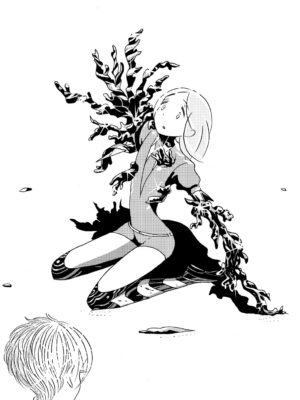
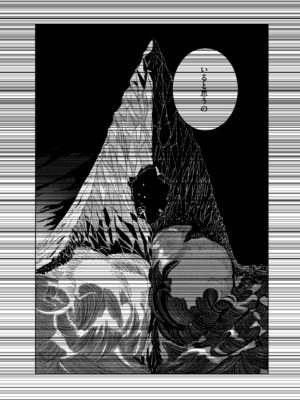
1. Luis O. Gómez ’The Land of Bliss: The Paradise of the Buddha of Measureless Light : Sanskrit and Chinese Versions of the Sukhāvatīvyūha Sutras’ p.16
2. A manga author/artist is a creator of Japanese comics, known as manga. Manga artists draw and may also invent the storyline, setting and characters. Stories are usually serialized in weekly or monthly magazines or published as one-shots. These works are later published as collected volumes.
Character profiles:
Phosphophyllite (Phos):
Our heroine. While beautiful and scarce she lacks hardness and is tasked with creating an almanac instead of fighting. She never seems to do anything right. She loses her arms and legs only to have them replaced with gold, platinum and agate, giving her the power to fight both physically and mentally.
Cinnabar:
Blessed with amazing knowledge yet driven to solitude by the poison her body secretes. Phos promises to find Cinnabar a more interesting job than her post as night watchman.
Diamond:
Her cute exterior hides a powerful warrior with a hardness rating of 10. She has mixed feelings towards her even stronger younger brother, Bortz. Loves romance gossip.
Bortz:
A black diamond. Fights together with Diamond. Strongest of the Gem Warriors and loves combat. Becomes interested in Phos after she becomes strong and suggests they team up.
Antarcticite:
An unusual mineral that only crystalizes in low temperatures. While the other Gems hibernate, she stands guard, alone.
Ventricosus:
Ruler of the sea, this member of the Admirabilis family evolved from a section of human flesh. A flat slug on land, she regains her near-human form in the ocean.
Master Adamantine:
Leader of the 28 Gems. Though strong and wise, once he falls asleep there’s no waking him back up.
Moon People:
Beings that launch sky raid to steal Gems for decoration. Appear in lavish outfits that feature lotus flowers, linked medallions and other Buddhist motifs.
Editing by David Kracker and image credit to C Haruko Ichikawa/KODANSHA
This article was first published in #4 Supernatural Issue, Current Obsession Magazine, 2015. You can get the issue here

